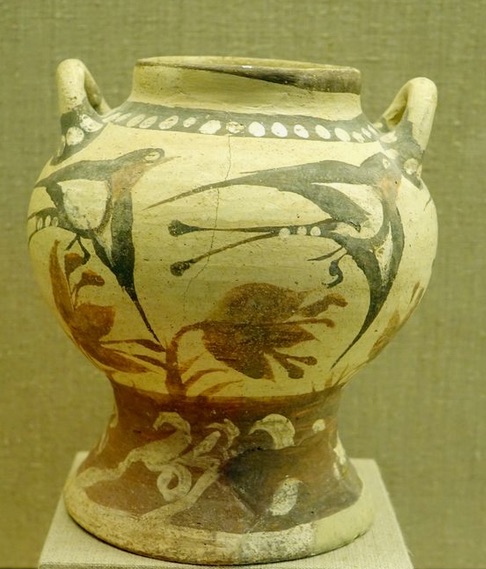- Read offline
- Access all content
- Build a list of your own favourites
- Search the contents with full-text search functionality
- ... and more!
ródi
ρόδι
Pomegranate. They are quite popular these days—in salads with rocket and fresh goat's cheese, in stuffings, or as a liqueur, or vinegar.
Pomegranates have been a part of Greek culture ever since the cows came home, depicted in some of the earliest Minoan art on Mílos, Crete and Akrotíri (Santoríni), including this charming vase with swallows:

Persephone famously swallowed seven of the ruby red seeds after she was abducted to hell by Hades, which compelled her to spend half the year underground. They are mentioned in the Odyssey, growing in the lovely gardens of King Alcinous. Priests at Eleuses wore wreaths made from pomegranate twigs during the Sacred Mysteries. Often you'll find pomegranate seeds in koliva.
Today in Greece they are a symbol of fertility because of their many seeds. They play an important role in the podariko—(the ‘good step’) ie the first person to step over the threshold should be one who brings luck, and enters right foot first, while the homeowners step on something made of iron, to insure the family will be as strong and healthy as iron.
The second person to enter is the good spirit, who smashes a pomegranate against the doorstep in the hopes that the new year will bring plenty of good things.
Images by Guy Couturier, ilquorum

